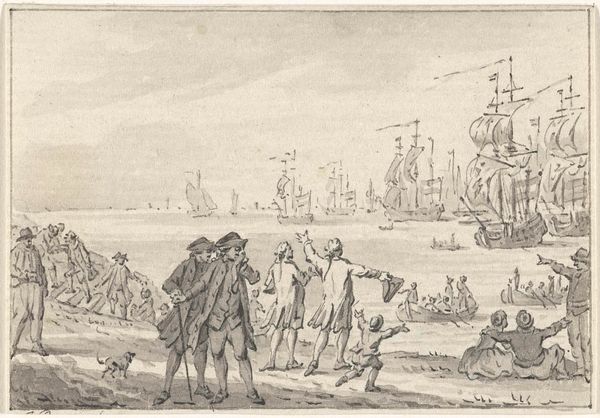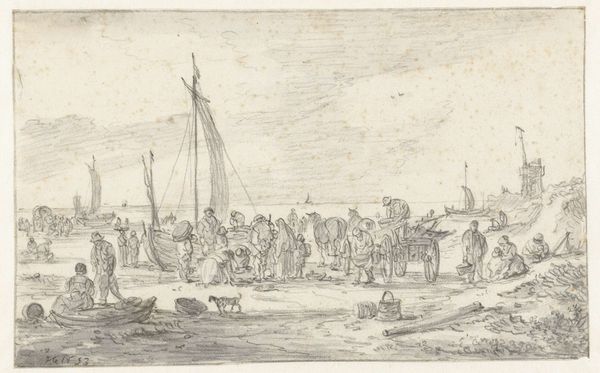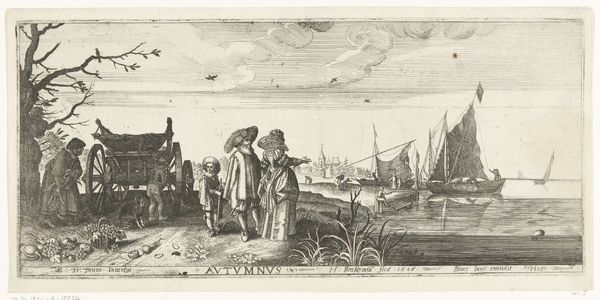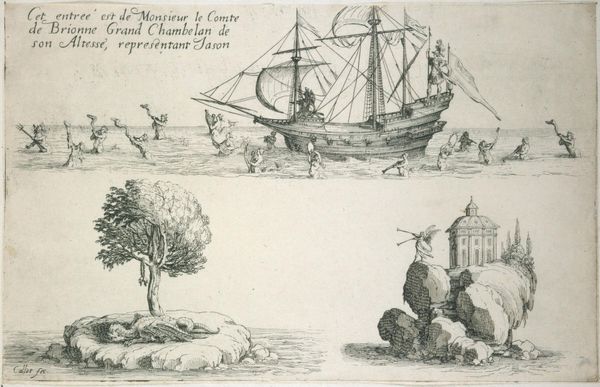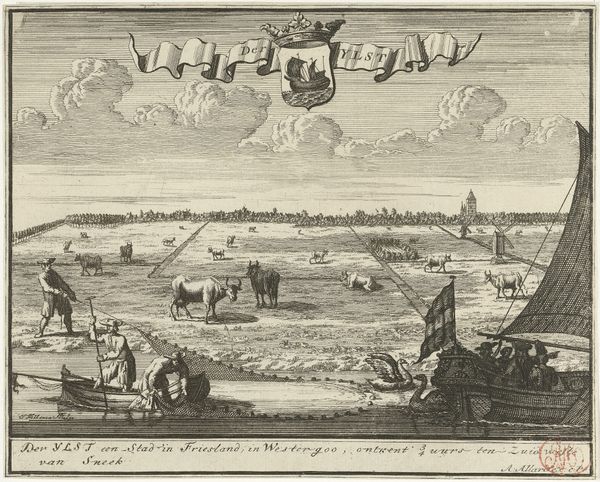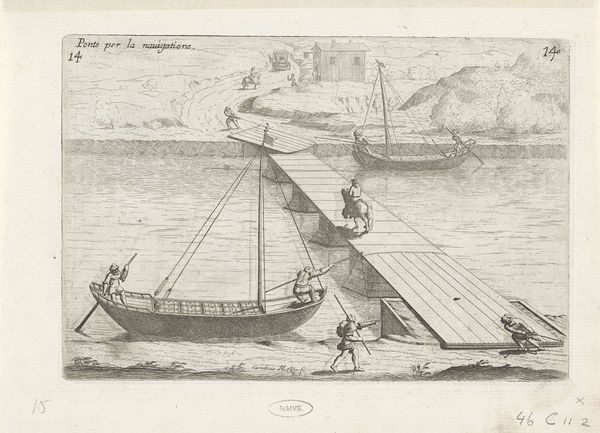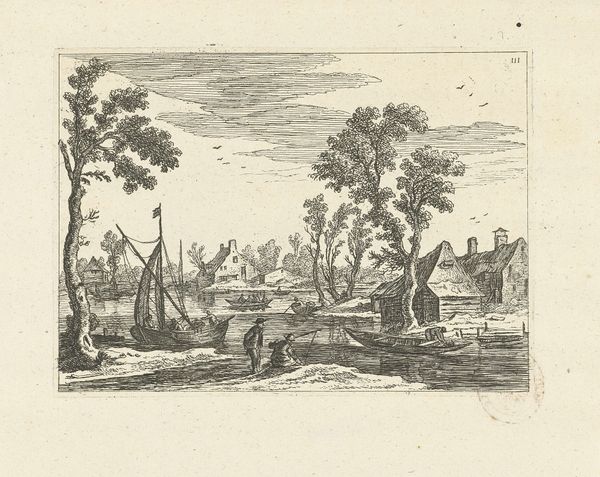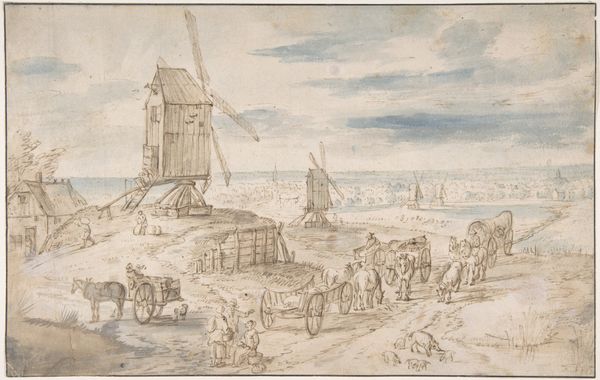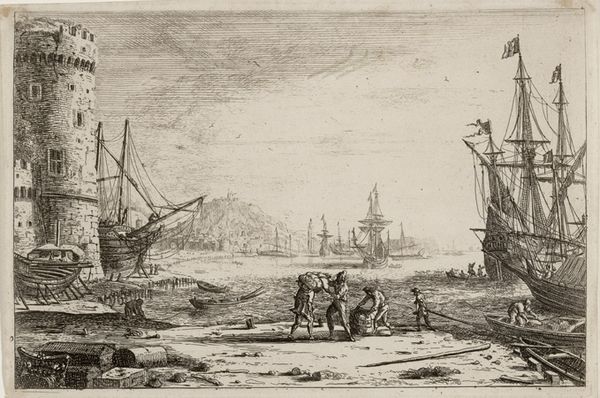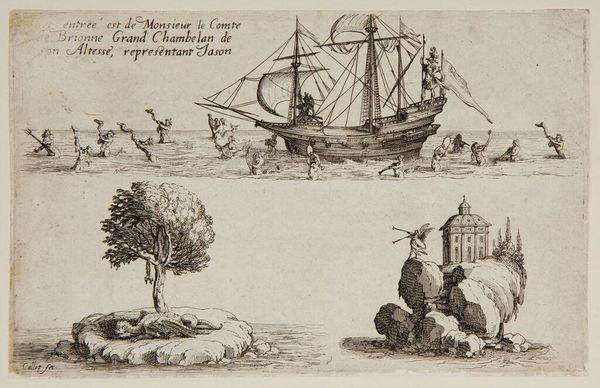
Fabel van de boer en zijn ezel; Zowel de boer als zijn zoon lopen 1627 - 1628
0:00
0:00
print, etching
#
narrative-art
#
baroque
# print
#
etching
#
landscape
#
genre-painting
Dimensions: height 115 mm, width 160 mm
Copyright: Rijks Museum: Open Domain
Curator: Here we have Wenceslaus Hollar's etching, "Fable of the farmer and his donkey; Both the farmer and his son are walking," created between 1627 and 1628. It is now part of the Rijksmuseum collection. Editor: What strikes me immediately is the composition—the stark division of figures set against the open landscape, water, and sky. It's like two separate acts are being performed on a single stage, each vying for the audience's attention. Curator: Precisely. Hollar, working in the Baroque style, used the print medium to disseminate moralizing tales to a growing public. This work taps into the broader early modern anxiety about social roles and the absurd expectations of public opinion. Editor: I am captivated by the donkey itself, positioned centrally. Donkeys often symbolize stubbornness or foolishness. The fact that neither the father nor son ride it amplifies this; it represents a failure of pragmatism, doesn't it? Curator: Yes, and that symbolism is reinforced by the jeering figures on the right, standing away from the others. The imagery here is deployed as social commentary. The people become both the subject of observation and observers themselves. Editor: I am fascinated with that duality – how this scene echoes across time. The pier in the background makes the image timeless – it looks just like many docks in small coastal towns around the world, and therefore creates a bond with us that we don't even expect. The donkey and family unit walk, as ships go out to the sea and windmills spin and smoke from village dwellings carries in the distance – the full cycle of human living. The emotional resonance still rings true today. Curator: Indeed. Looking at Hollar's historical and political context, printmaking enabled wide access to imagery and was deployed during periods of religious and social upheaval, this parable encourages questioning. Editor: Thinking about the fable, I see how this engraving goes beyond simple moralizing. The image offers a commentary about what it is to feel observed. I am walking away thinking, perhaps they walk as to challenge any potential observers on what to do, or how to judge. Curator: Absolutely. It becomes a timeless examination of human folly and the challenges of navigating social expectations, something still extremely poignant centuries after its creation.
Comments
No comments
Be the first to comment and join the conversation on the ultimate creative platform.


